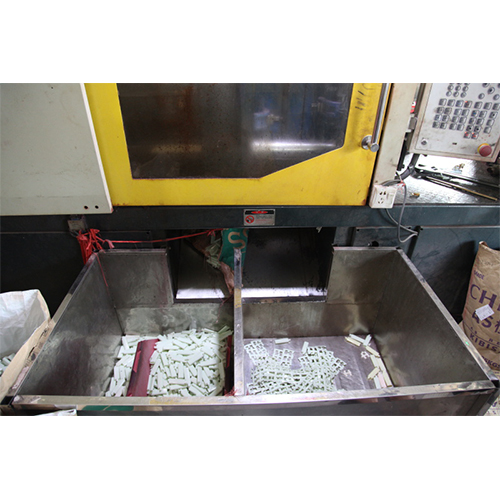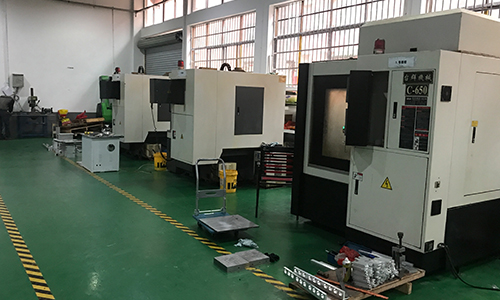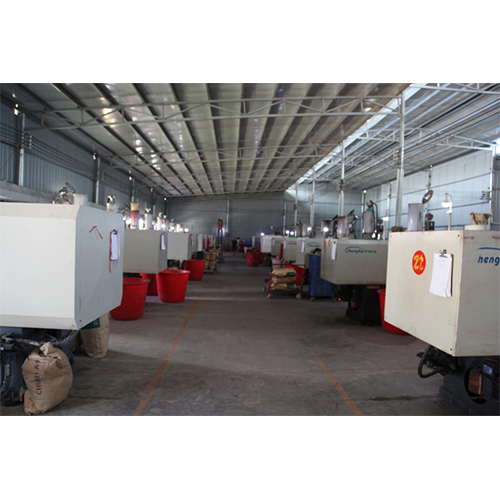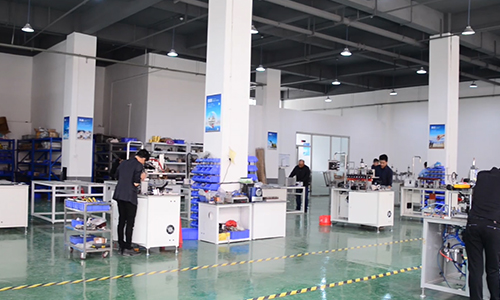The working principle of injection molding machine and injection molding machine is to use the thrust of screw to inject molten plastic into the closed mold cavity, and obtain the required products after solidification molding. As the production equipment of batch plastic products, it is an eternal subject to shorten the production cycle and improve the production efficiency on the premise of ensuring the quality. Therefore, it is particularly important to adjust the appropriate injection pressure and injection speed.

Adjusting the injection pressure and speed depends on the size of the product. Simple molds can be rapidly formed in one or two stages, while large complex molds are generally divided into four stages with good quality. The first stage fills the product door at a slow speed. The normal speed pressure is lower than 30% and 40bar respectively; The second stage is injected into the protruding area of the front mold. At this time, medium speed and medium pressure (40% - 60%, 30-50bar) shall be used to avoid flow marks caused by too fast injection speed; When the three-stage injection reaches 95% of the product, it should be filled quickly to prevent the melt temperature from falling too fast and affecting the product molding. The speed and pressure are set above 40% - 60% and 60-100bar respectively, and the slow buffer is used in the four stages. Enter the pressure maintaining state to prevent product flash. The injection position can be determined by short shot method. The so-called short shot method refers to injecting the whole mold cavity first, without slow glue, filling only a small part each time, gradually increasing, filling for many times, and finally filling the whole mold cavity. Check whether the injection glue is uniform. The whole process setting of injection pressure and speed is that the mold runs smoothly without abnormal vibration.

Of course, the resistance of different plastics in the molten state is different. This needs to be fine tuned according to the actual situation to ensure that the injection molding machine works quickly, stably and efficiently.
According to the molecular structure of resin in plastics, plastics can be divided into crystalline plastics and amorphous plastics. The main difference between crystalline plastics and amorphous plastics is whether the resin molecules can form a certain degree of regular arrangement from molten state to condensed state. If a certain degree of regular arrangement can be formed, it is called crystallization, otherwise it is called amorphous.
Crystalline plastics and amorphous plastics not only have significant differences in mechanical properties, but also have significant differences in shrinkage from viscous state to glass state. The shrinkage of crystalline plastics is usually 210 times that of amorphous plastics. At the same time, for crystalline plastics, if the cooling rate of each part is inconsistent during the cooling process, the crystallinity of each part of the product will be different. The difference of crystallinity will lead to internal stress and deformation of the product. Even cracking. Therefore, for crystalline plastics, the design of mold cooling system is an important aspect related to the degree of product deformation.
In addition to resin, some fillers are usually added to raw materials to improve the mechanical, electrical, optical and thermal properties of plastics. Due to the shear flow during injection molding, these fillers will form molecular orientation. The fiber orientation distribution was analyzed by Moldflow software. Orientation will lead to significant differences in the shrinkage of products in different directions. For example, the shrinkage of PA66 reinforced by 30 glass fibers is 0.4 in the flow direction and 1.1 in the direction perpendicular to the flow direction. The shrinkage difference in different directions will lead to internal stress in the product. Therefore, for FRP products, the uneven orientation of filler is often the main cause of deformation. In production practice, in order to improve or eliminate product deformation, people usually take measures such as changing gate position and adjusting injection speed.
It can be seen that there are five main factors affecting the deformation of injection molding products, namely: molding materials, molding methods, product design, mold design and injection molding process conditions.
Molding material
The influence of molding raw materials on product deformation mainly refers to the molecular structure of resin and the type of filler in raw materials.

Forming method
At present, a variety of molding methods have been developed on the basis of traditional injection molding, such as ultra-high speed injection molding and gas assisted molding.
In particular, the application of gas assisted molding is gradually transitioning from simple handles, handrails and other products to the production of complex products in home appliances, audio, automobiles, office supplies, toys and other industries. There are more and more kinds of products produced by gas assisted molding, and their shapes are more and more complex.
Gas assisted molding breaks through the technical limitations of traditional injection molding and is an innovation of traditional injection molding technology. It not only saves plastic raw materials, eliminates surface shrinkage marks, shortens the molding cycle, simplifies the product design, reduces the mold cost, but also reduces the injection pressure, so as to reduce the pressure difference in the mold, so as to reduce the internal stress and product deformation. When the safety bar of auto parts is formed by traditional injection molding, the surface deformation of thin plate is serious and irregular S-shape. After gas assisted forming, the whole part is not deformed, and the plate surface is smooth and arc-shaped.
product design
The influence of product design on deformation mainly focuses on product wall thickness, wall thickness uniformity, product shape and structural stiffness.
The effect of product wall thickness on deformation usually varies with the type of plastic. For amorphous plastics, too thin wall thickness often leads to serious orientation.
Therefore, in order to reduce the deformation of such plastic products, it is usually necessary to appropriately increase the wall thickness in the design to reduce the adverse effect of molecular orientation. At the same time, properly increasing the wall thickness also increases the rigidity of the product to a certain extent, thus reducing the deformation of the product.

For crystalline plastic products, the measure to reduce deformation in design is to reduce wall thickness and improve the uniformity of wall thickness. The reason for reducing the wall thickness is the high shrinkage of crystalline plastics. Reducing the wall thickness can reduce the volume shrinkage of products. Through the analysis of Moldflow software, it can be seen that the reason for improving the uniformity of wall thickness is that if the wall thickness is uneven, the crystallinity of thin wall and thick wall is different, the difference of crystallinity, and the shrinkage of different parts makes the shrinkage rate of different parts different, resulting in internal stress, The product is deformed by the injection molding machine.






